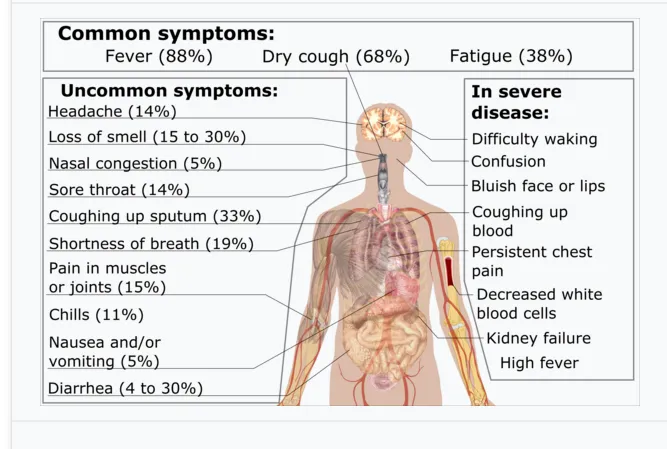infected with the virus may be asymptomatic or develop flu-like symptoms, including fever, cough, fatigue, and shortness of breath. Emergency symptoms include difficulty breathing, persistent chest pain or pressure, confusion, difficulty waking, and bluish face or lips; immediate medical attention is advised if these symptoms are present. Less commonly, upper respiratory symptoms, such as sneezing, runny nose, or sore throat may be seen.

Symptoms such as nausea, vomiting, and diarrhea have been observed in varying percentages. Some cases in China initially presented only with chest tightness and palpitations. In March 2020 there were reports indicating that loss of the sense of smell (anosmia) may be a common symptom among those who have mild disease, although not as common as initially reported. In some, the disease may progress to pneumonia, multi-organ failure, and death. In those who develop severe symptoms, time from symptom onset to needing mechanical ventilation is typically eight days.
As is common with infections, there is a delay between the moment when a person is infected with the virus and the time when they develop symptoms. This is called the incubation period. The incubation period for COVID-19 is typically five to six days but may range from two to 14 days. 97.5% of people who develop symptoms will do so within 11.5 days of infection.
Reports indicate that not all who are infected develop symptoms, but their role in transmission is unknown. Preliminary evidence suggests asymptomatic cases may contribute to the spread of the disease. The proportion of infected people who do not display symptoms is currently unknown and being studied, with South Korea's CDC reporting that 20% of all confirmed cases remained asymptomatic during their hospital stay.